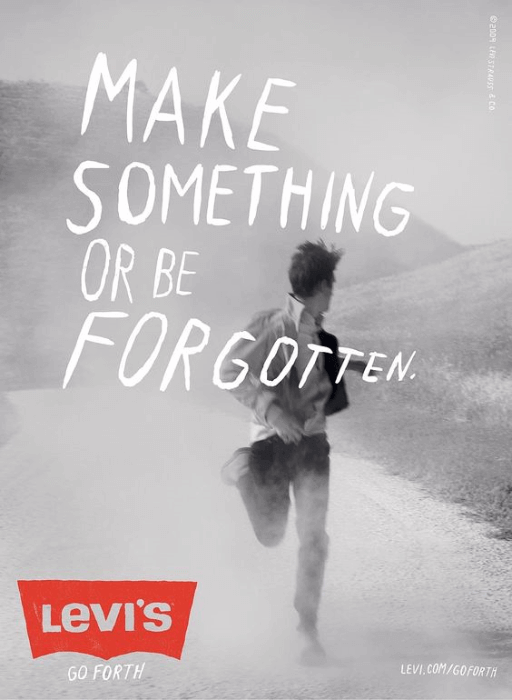
9 min read
In art, manifestos have stood at the heart of progress — they used shock value to cast aspersions over wider issues such as corrupt political systems or outdated means of expression. In doing so, they relied on a published declaration that outlined their intentions, motives, or values. Taking cues from the art world, businesses today rely on brand manifestos to describe their existence, purpose, and importance on the market.
This purpose is self-evident in the lexical definition as well. After all, manifesting means “showing (a quality or feeling) by one’s acts or appearance; demonstrating.” In branding, this usually implies creating an emotional story that resonates with your audience, appeals to their emotions, and convinces them to stand behind your brand.
In practical terms, a brand manifesto can help brands grow their customer base and hire top talent faster. But to reap these benefits, businesses need to understand what goes into writing a brand manifesto in order to craft their own story. Let’s begin!
Starting with ‘Why’ – Should you?
“People don’t buy what you do. They buy why you do it.”
(from Simon Sinek’s TED Talk ‘How Great Leaders Inspire Action’)
Since 2009, this particular statement inspired marketers and leaders alike in driving their core branding message. And it makes sense, since branding is less about what you sell or how you manufacture your product. Not to undermine the importance of these aspects, but they do little to set businesses apart in an increasingly crowded market. To advance the branding efforts, the why has come front and center.
But how does the why feed into the brand manifesto? Well, it literally describes the brand’s purpose, which is more likely to elicit an emotional response from an audience than the what or the how. On a deeper level, emotions influence decisions, which could be extended to purchase decisions as well.
This approach is sound and well, but there is one common pitfall to consider. Some brands idealize their brand manifesto, but they don’t follow through in practice — their product does not really stand up to the stated promise.
Example: Brand Manifestos from Nike run club and Lululemon.

Source: pinterest.de 
Source: pinterest.com
To test if your manifesto is up to the challenge, try framing it differently. Start with your what [product], followed by “because,” and ending with why [your purpose]. If the resulting sentence makes sense, then you have a winner. Otherwise, you might need to go back to the drawing board.
In all, the why could be a great starting point for your brand manifesto, especially if it’s central to your brand identity and your product offering really adds something new to the table. But if the why is all you bring to the table, you need to adjust and support this with your offering as well.
Nailing Your Brand Manifesto
Having examined what is a brand manifesto and the things you should consider as you get started, let’s put this knowledge into practice and highlight what makes a brand manifesto great.
- Summon the Collective Voice
There is no “I” in a brand. Each product is the result of collective action, so the brand manifesto should reflect that. So always go with ‘we’ when you employ the brand voice. This implies that the values and purpose you act upon are spread across your organization — from the employees to the executive suite. - Be Bold, Be Active
Yes, it all boils down to grammar. Using the active voice allows brands to be bold and actually own their actions. Statements starting with “We believe,” “We value,” or “We reject” are more likely to resonate with the target audience and inspire further action. - Own the Status Quo, then Change it
All great brands are fueled by a desire to do things better and revolutionize the niche they operate in. But this desire alone might not hold ground if you don’t know your market in order to make room for improvements. Using this knowledge, you can communicate effectively your plan for change and how you will carry it through. - Manifest Your Manifesto
A manifesto is not a ‘one and done’ endeavor. Its premise should be present in all aspects of the business and inform all decisions moving forward. If you’re a tech business that believes in a sustainable future, iterate the steps you’re taking to reduce the carbon footprint of your operations. If you’re a clothing retailer with a clean supply chain, be transparent about the factories you work with and the materials you source in your clothing. And the list could go on.
Does Your Brand Manifesto Pass the “So What” Test?
You did it. You found your purpose and you have a strategy in place to make it gain traction across the organization. You are certain that your purpose will revolutionize your niche and make the world a better place. And then your customers go: “So what?” It means that your brand manifesto does not appeal to them and it’s unlikely to elicit an emotional response. No emotions, no purchase decisions. This is bad for your ROI. As much as your brand manifesto should be true to your purpose, it should also speak to your customer’s needs and describe how they can ultimately improve their lives by using your product.
So the extra layer to your brand manifesto would be to help prospects imagine a better life or future enabled by your product or service. Once you convince them that they should care, you are well on your way towards building a loyal customer base.
Example: Brands that combine manifesto with visual images created better impact.

Source: pinterest.de 
Source: pinterest.de
Manifesto for the Future You Want
Very often, businesses think in terms of ROI and building a loyal customer base. Legitimately, this makes business sense. But some brands actually manage to transcend the business reality and drive meaningful changes in the way we experience life in general.
By extending the status quo, successful brand manifestos imagine new realities and disrupt business as usual. It could be a more sustainable future, better employee welfare, or closing the gender pay gap. Setting important values at the heart of their purpose is likely to resonate with their target audience and lead to a better future.
The Xara branding hub
Whether you want to grasp the basics of branding for your new business, want to work on your brand strategy, are stuck with your brand visuals or want to find branding tips on how to grow your business, check out:
- Foundations — Learn the basics of branding
- Strategy — Plan your brand strategy
- Build Story — Build a brand 1: Your brand story
- Build Visuals — Build a brand 2: Your brand visuals
- Management — Control your brand: Brand management
- Growth — Grow your brand: Brand marketing
- Improvement — Improve your brand: The rebrand
- Measurement — Measure your brand: Brand analytics and KPIs
